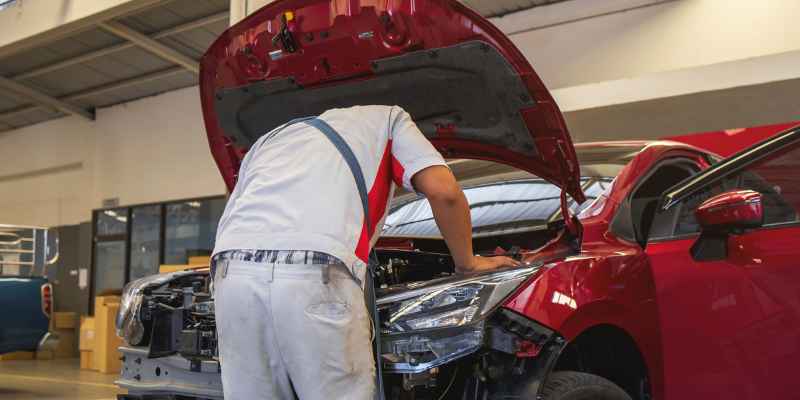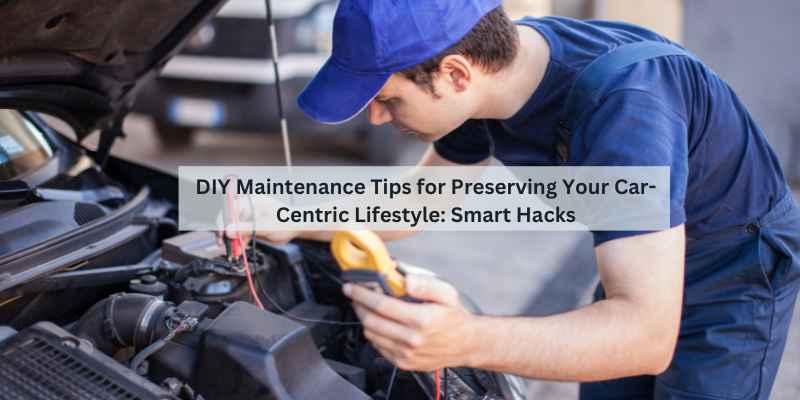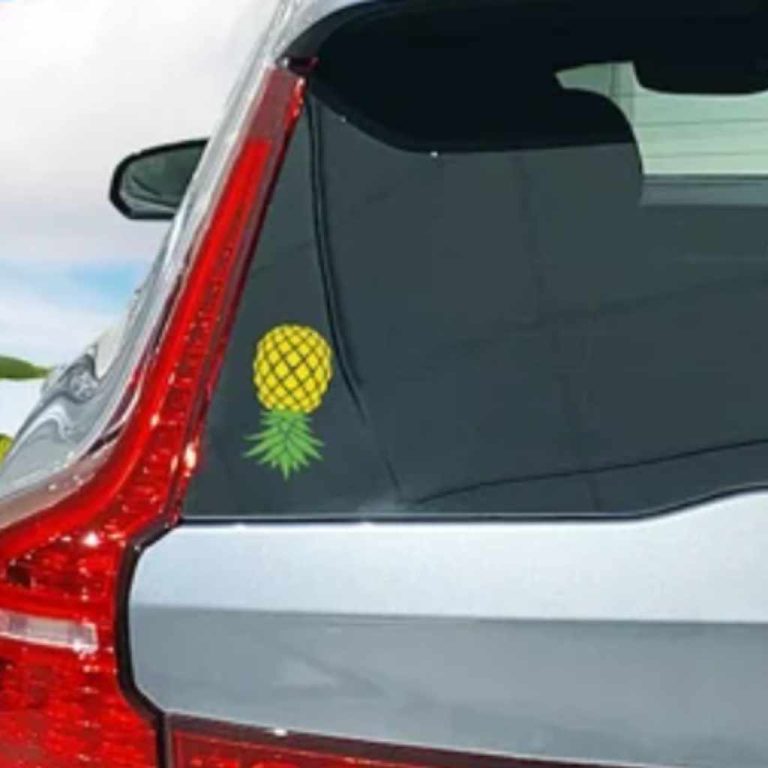DIY Maintenance Tips for Preserving Your Car-Centric Lifestyle: Smart Hacks
Preserve your car-centric lifestyle with these DIY maintenance tips. Keep your vehicle in top shape and enjoy the convenience and freedom of a car-centered lifestyle.
Maintaining a car is not only crucial for its longevity and performance but also for preserving your car-centric lifestyle. Whether you rely on your vehicle for commuting, road trips, or simply enjoying the convenience it offers, regular maintenance is essential.
By taking a hands-on approach and implementing DIY maintenance tips, you can ensure your car stays in optimal condition while saving time and money. In this blog post, we will explore some practical and easy-to-follow tips that will help you preserve your car-centric lifestyle. From basic maintenance tasks to more advanced techniques, these tips will empower you to take control of your vehicle’s upkeep and continue enjoying the benefits of a car-centered lifestyle.
Embracing The DIY Ethos
Embracing the DIY ethos can help you preserve your car-centric lifestyle by providing you with maintenance tips that are easy to follow. From changing your own oil to performing basic repairs, there are plenty of ways to keep your car running smoothly without breaking the bank.
So why not give it a try and see how much you can save?
The Joy Of Hands-on Work
There is a certain joy that comes with taking matters into your own hands, especially when it comes to maintaining your beloved car. Embracing the DIY ethos allows you to not only save money but also develop a deeper connection with your vehicle. By getting your hands dirty and learning the ins and outs of car maintenance, you can become more self-reliant and gain a sense of accomplishment.
Essential Tools For Every Car Owner
As a car owner, having the right tools at your disposal is essential for any DIY maintenance project. Here are some must-have tools to add to your arsenal:
| Tool | Description |
|---|---|
| Socket Set | A versatile set of sockets and ratchets for various tasks, such as removing bolts and nuts. |
| Screwdriver Set | A collection of different screwdrivers, including flathead and Phillips, for loosening or tightening screws. |
| Wrench Set | Various wrench sizes for turning nuts and bolts. |
| Jack and Jack Stands | Essential for lifting your car safely when performing tasks such as changing a tire or inspecting the undercarriage. |
| Oil Filter Wrench | A specialized tool for removing and installing oil filters. |
These are just a few examples of the tools you’ll need. Depending on the specific maintenance tasks you plan to tackle, you may require additional tools such as pliers, a torque wrench, or a multimeter. Investing in high-quality tools will not only make your DIY projects easier but also ensure their longevity.
Routine Checks To Keep Your Car Healthy
Regular maintenance is crucial for preserving your car-centric lifestyle. By performing routine checks, you can ensure your vehicle stays in optimal condition. Two essential areas to focus on are oil level and quality, as well as tire pressure and tread wear.
Oil Level And Quality
- Check oil level using dipstick regularly.
- Ensure oil is at the recommended level.
- Inspect oil color for signs of contamination.
- Change oil as per manufacturer’s guidelines.
Tire Pressure And Tread Wear
- Use a pressure gauge to check tire pressure monthly.
- Maintain pressure as indicated in the owner’s manual.
- Check tires for uneven wear patterns regularly.
- Replace tires if tread depth is below recommended level.
Deep Cleaning Techniques For A Sparkling Car
Deep cleaning your car is essential for maintaining its appearance and value. By using the right techniques, you can achieve a sparkling, showroom-worthy finish both inside and out. Here are some expert tips for interior detailing, exterior washing, and waxing to keep your car in top condition.
Interior Detailing Tricks
When cleaning your car’s interior, start by removing all items from the cabin, including floor mats, trash, and personal belongings. Use a vacuum with a brush attachment to thoroughly clean the seats, carpets, and upholstery. For hard-to-reach areas, such as air vents and crevices, use a small detailing brush. Wipe down surfaces with a microfiber cloth and a gentle cleaner to remove dust, dirt, and stains.
Exterior Washing And Waxing
Begin by rinsing the car with water to remove loose dirt and debris. Use a pH-balanced car wash soap and a soft sponge or microfiber mitt to gently scrub the exterior. Rinse thoroughly, ensuring all soap residue is removed. For waxing, choose a high-quality carnauba or synthetic wax and apply it in a shaded area. Use a clean, soft cloth to buff the wax to a brilliant shine, adding a layer of protection to the paint.
Economical Fixes For Common Car Problems
Keep your car running smoothly with these economical DIY maintenance tips. From fixing minor dents to changing the oil, preserving your car-centric lifestyle doesn’t have to break the bank. With a little know-how, you can tackle common car problems and save on costly repairs.
As a car owner, it’s essential to know how to maintain your vehicle to keep it running smoothly. Regular maintenance can prevent costly repairs in the future. However, not everyone has the budget to take their car to a mechanic every time an issue arises. Fortunately, some common car problems can be fixed economically, and we’ll cover a few of them in this post.
Replacing Wiper Blades
Windshield wiper blades are crucial for maintaining visibility while driving in the rain. Over time, the rubber on wiper blades can wear down, causing streaks and smears on the windshield. Fortunately, replacing wiper blades is a simple and affordable task that you can do yourself.
To replace your wiper blades, follow these steps:
- Lift the wiper arm away from the windshield.
- Press the small tab on the underside of the wiper blade where it meets the wiper arm.
- Slide the old wiper blade off the wiper arm.
- Slide the new wiper blade onto the wiper arm until you hear a clicking sound.
- Gently lower the wiper arm back onto the windshield.
Changing Air Filters
The air filter in your car prevents dirt and debris from entering the engine, which can cause damage over time. A dirty air filter can also reduce your car’s fuel efficiency and performance. Changing your air filter is a simple task that can be done at home.
To change your air filter, follow these steps:
- Locate your air filter housing unit. It’s usually a plastic box located near the engine.
- Unscrew the clips or bolts that hold the housing unit in place.
- Remove the old air filter and dispose of it properly.
- Insert the new air filter into the housing unit.
- Secure the housing unit back into place with the clips or bolts.
By following these simple DIY maintenance tips, you can preserve your car-centric lifestyle without breaking the bank. Regularly replacing wiper blades and air filters can keep your car running smoothly and prevent more expensive repairs down the road.

Battery Maintenance For Longevity
To ensure your car’s battery lasts longer, proper maintenance is essential.
Corrosion Prevention
Regularly check and clean the battery terminals to prevent corrosion buildup.
Charging And Replacing Tips
- Use a battery charger to maintain optimal charge levels.
- Replace the battery every 3-5 years or as recommended by the manufacturer.
Keeping Your Car’s Cooling System In Check
Keeping Your Car’s Cooling System in Check is crucial for maintaining your vehicle’s performance and longevity.
Flush And Fill Method
Flushing and filling the cooling system removes dirt and debris, ensuring optimal engine temperature regulation.
Radiator Maintenance
Regularly inspecting the radiator for leaks or corrosion helps prevent overheating issues.
DIY Bodywork To Remove Dents And Scratches
Preserving the aesthetic appeal of your car is crucial in maintaining your car-centric lifestyle. DIY bodywork to remove dents and scratches is a cost-effective way to keep your vehicle looking its best. Here are some simple techniques for addressing minor dents and scratches without breaking the bank.
Using A Plunger For Small Dents
Small dents can be easily fixed using a household plunger. Here’s how:
- Ensure the plunger and the dent are clean and dry.
- Place the plunger over the dent and press firmly to create a vacuum seal.
- With a strong, steady pull, carefully lift the plunger, which should pop the dent out.
- Repeat if necessary until the dent is no longer visible.
Scratch Repair Kits
Scratch repair kits are an affordable solution to address minor scratches. Follow these steps:
- Clean the scratched area to remove any dirt or debris.
- Apply the scratch repair solution using the provided applicator.
- Buff the area with a clean cloth to blend the repair into the surrounding paint.
- Repeat the process if needed to achieve the desired results.
Electrical System Basics You Can Manage
Understanding the basics of your car’s electrical system empowers you to handle common issues without the need for a professional. With a few simple maintenance tasks, you can ensure that your car’s lights and electrical components are functioning optimally. Here are some easy electrical system basics you can manage on your own.
Changing Headlights And Taillights
Regularly checking and replacing headlights and taillights is crucial for maintaining visibility and safety on the road. Follow these simple steps to change a bulb:
- Locate the bulb holder at the rear of the headlight or taillight assembly.
- Twist the bulb holder counterclockwise to remove it.
- Remove the old bulb and replace it with a new one, handling the new bulb with gloves or a clean cloth to prevent oil from your skin affecting its lifespan.
- Insert the bulb holder back into the assembly and twist it clockwise to secure it in place.
- Test the new bulb to ensure it is working properly before driving.
Troubleshooting Fuses
Fuses protect the electrical system by breaking the circuit when there’s a power surge or short circuit. Here’s how you can troubleshoot and replace a blown fuse:
- Refer to your car’s manual to locate the fuse box, usually found beneath the dashboard or in the engine compartment.
- Use the fuse puller tool to carefully remove the blown fuse.
- Inspect the metal strip inside the fuse to see if it’s broken or damaged.
- If the fuse is faulty, replace it with a new fuse of the same amperage rating.
- Once replaced, test the electrical component to ensure it’s functioning properly.
Upgrades And Modifications You Can Do Yourself
Enhancing your car doesn’t have to break the bank. You can easily make upgrades and modifications yourself, preserving your car-centric lifestyle without spending a fortune.
Installing New Car Audio
Upgrade your driving experience by installing new car audio yourself. Follow these simple steps:
- Disconnect the battery to prevent electrical issues.
- Remove the old audio system carefully.
- Install the new audio system following the manufacturer’s instructions.
- Test the audio to ensure it’s working correctly.
Customizing With Vinyl Wraps
Add a personal touch to your vehicle by customizing it with vinyl wraps. Here’s how you can do it yourself:
- Clean the surface of your car thoroughly.
- Measure and cut the vinyl wrap according to the size of the area you want to cover.
- Apply the vinyl wrap carefully, ensuring there are no air bubbles.
- Use a heat gun to secure the vinyl wrap in place.
Preparing Your Car For Seasonal Changes
As the seasons change, it’s essential to prepare your vehicle accordingly to maintain its optimal performance and longevity. By following some simple DIY maintenance tips, you can ensure that your car is ready to face the challenges of each season.
Winterizing Your Vehicle
- Check antifreeze levels and top up if necessary.
- Inspect and replace worn-out windshield wipers.
- Switch to winter tires for better traction on icy roads.
- Keep an emergency kit with essentials like blankets and a flashlight.
Summer Heat Protection
- Monitor coolant levels to prevent overheating.
- Inspect and replace air filters for efficient cooling.
- Park in shaded areas or use a sunshade to protect the interior.
- Regularly check tire pressure as it can fluctuate in hot weather.
By taking these proactive steps to winterize your car and protect it from summer heat, you can preserve your car-centric lifestyle and enjoy smooth rides throughout the year.

Frequently Asked Questions
How To Prolong Your Car Life?
To prolong your car’s life, maintain regular servicing, drive smoothly, avoid sudden stops, keep tires inflated, and store properly.
How Do You Extend Your Engine Life?
To extend your engine life, follow these tips: 1. Use high-quality motor oil and change it regularly. 2. Keep your engine clean by regularly replacing air and fuel filters. 3. Warm up your engine before driving and avoid revving it excessively.
4. Don’t neglect regular maintenance, such as checking belts and hoses. 5. Drive smoothly, avoiding sudden acceleration or braking.
How To Do Car Maintenance Yourself?
To do car maintenance yourself, follow these steps: 1. Check the owner’s manual for maintenance schedule. 2. Inspect fluids, belts, and hoses regularly. 3. Change oil and air filters as recommended. 4. Replace brake pads and rotors as needed. 5. Keep tires inflated and replace when worn.
How To Make Your Car Last 500,000 Miles?
To make your car last 500,000 miles, follow the manufacturer’s maintenance schedule. Use high-quality oil and filters, and maintain proper tire pressure. Drive gently and avoid sudden acceleration or braking. Keep up with regular inspections and address any issues promptly.
Conclusion
Incorporating these DIY maintenance tips will help you extend the life of your car and maintain your car-centric lifestyle. By following these simple steps, you can save money on costly repairs and ensure that your vehicle stays in top condition for years to come.
Take charge of your car maintenance and enjoy a worry-free driving experience.






